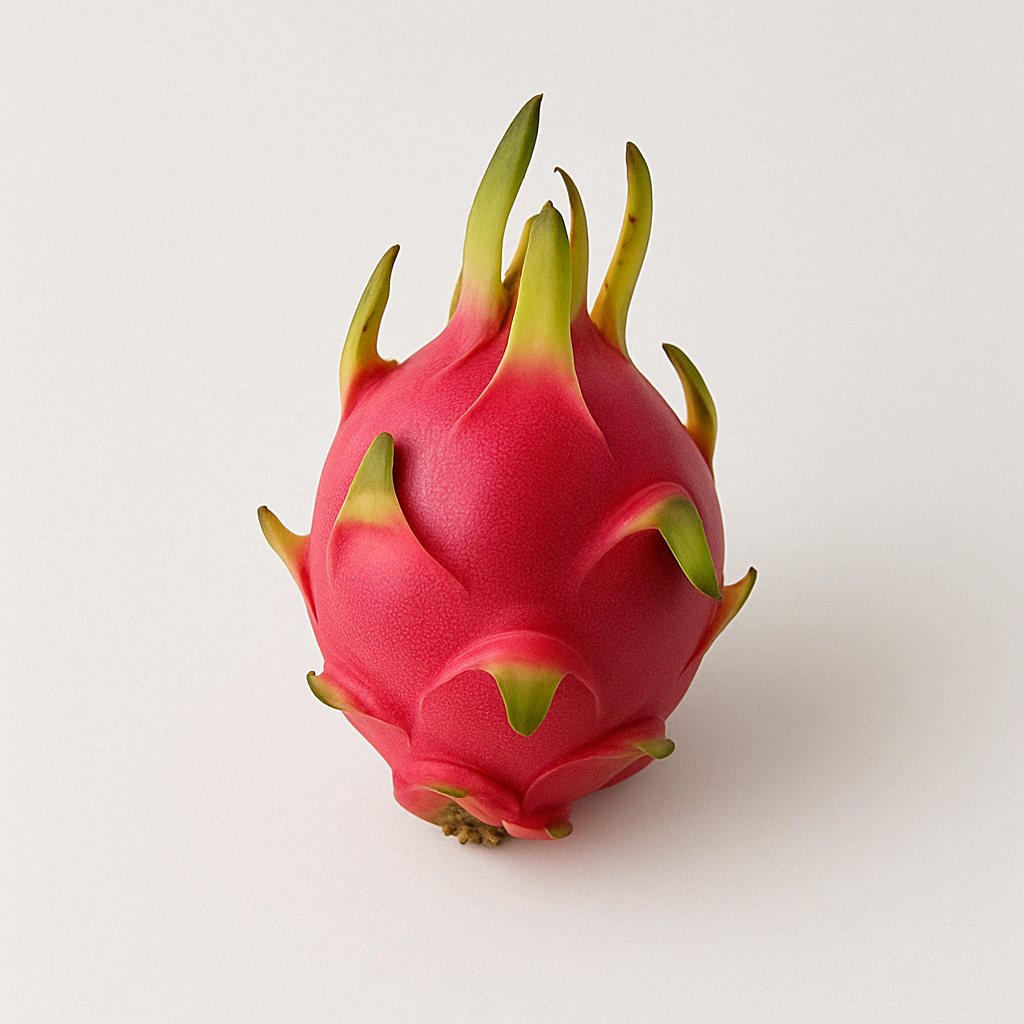
신선 용과 from 베트남
Be the first supplier featured in this market.
About this market
About
History
Dragon fruit cultivation in Vietnam began in the early 2000s, with initial efforts focusing on small-scale farms in southern provinces. Recognizing the fruit's economic potential, the Vietnamese government and local farmers expanded cultivation, particularly in Binh Thuan, Long An, and Tien Giang provinces. Over time, Vietnam has become the world's leading exporter of dragon fruit, supplying markets across Asia, Europe, and North America.
Production Regions
Dragon fruit production in Vietnam is concentrated in the following key regions:
- Binh Thuan Province: Accounts for approximately 50.73% of the nation's dragon fruit cultivation area.
- Long An Province: Represents about 15.15% of the cultivation area, with Chau Thanh District being notable for its high-quality red-fleshed dragon fruit.
- Tien Giang Province: Contributes around 16.42% to the total cultivation area.
These provinces benefit from favorable climatic conditions and have developed infrastructure to support large-scale dragon fruit farming.
Growing Conditions
Dragon fruit thrives in Vietnam's tropical climate, characterized by:
- Temperature: Optimal growth occurs between 20–35°C.
- Rainfall: The country experiences a hot, wet season from May to November and a warm, dry season from December to April, aligning well with the plant's growth requirements.
- Soil: Well-drained, sandy soils are ideal to prevent root rot and support healthy growth.
Harvesting Process
The harvesting of dragon fruit in Vietnam involves:
- Maturity Indicators: Fruits are ready for harvest when the skin turns vibrant red or pink, and the bracts begin to wither slightly.
- Manual Harvesting: Fruits are hand-picked using gloves and clippers to prevent damage.
- Post-Harvest Handling: Fruits are cleaned, sorted by size and quality, and packed in ventilated boxes for export, ensuring compliance with international standards.
Cultivation Methods
Vietnamese farmers employ various techniques to optimize dragon fruit production:
- Trellising Systems: Concrete or wooden posts support the climbing vines, maximizing light exposure and air circulation.
- Irrigation: Drip irrigation systems provide consistent moisture, especially during dry periods.
- Artificial Lighting: Used to induce off-season flowering, enabling year-round production.
- Integrated Pest Management (IPM): Combines monitoring, natural predators, and judicious pesticide use to control pests and diseases.
Supply Chain
Vietnam's dragon fruit supply chain is well-structured to support exports:
- Farmers and Cooperatives: Both small-scale farmers and larger cooperatives contribute to production, with many adopting Good Agricultural Practices (GAP) certifications.
- Processing Facilities: Located near production areas, these facilities handle cleaning, sorting, and packing.
- Export Logistics: Major export routes utilize ports such as Ho Chi Minh City and Da Nang, with shipments transported via refrigerated containers to maintain freshness.
Regulations and Certifications
To access international markets, Vietnamese dragon fruit producers adhere to:
- Phytosanitary Certifications: Compliance with importing countries' plant health regulations.
- VietGAP and GlobalGAP: Certifications ensuring adherence to good agricultural practices.
- Traceability Systems: Implemented to meet the requirements of markets such as the EU and the US.
Quality Standards
Export-quality dragon fruit from Vietnam must meet criteria including:
- Size: Typically ranging from 350–400 grams per fruit.
- Appearance: Uniform color, undamaged skin, and well-formed bracts.
- Brix Level: A minimum of 10–13% for sweetness.
- Shelf Life: Minimum of 10–15 days under proper storage conditions.
Trade Terms
Vietnam exports dragon fruit under various trade terms:
- Incoterms: FOB (Free on Board), CIF (Cost, Insurance, Freight), and DDP (Delivered Duty Paid).
- Export Destinations: China is the largest market, followed by Thailand, Indonesia, India, the US, and the EU.
- Transport: Primarily by sea for long-distance destinations and by road to neighboring countries.
Environmental and Social Impacts
- Environmental: The use of artificial lighting for off-season production increases energy consumption. However, efforts are being made to adopt solar lighting and reduce water waste through efficient irrigation systems.
- Social: Dragon fruit farming provides employment and income for rural communities. Training and capacity-building initiatives are improving farmer livelihoods and production practices.
Uses
- Fresh Consumption: Eaten raw, often chilled or blended into smoothies.
- Processed Products: Used in jams, juices, yogurts, ice creams, and dried fruit snacks.
- Cosmetics and Nutraceuticals: Rich in antioxidants and vitamin C, dragon fruit is increasingly used in skincare and health supplements.
Additional Information
- Innovations: Research into new cultivars and organic production methods is ongoing.
- Market Trends: Growing demand for red-fleshed and organic dragon fruit in premium markets.
- Challenges: Fluctuations in demand, border trade restrictions (especially with China), and post-harvest losses remain concerns.
Harvesting seasonality
Varieties
White-Fleshed Dragon Fruit
(Hylocereus undatus)
The predominant variety, accounting for about 95% of production
Red-Fleshed Dragon Fruit
(Hylocereus costaricensis)
Represents approximately 5% of production, gaining popularity for its vibrant color and sweeter taste.
Export of 신선 용과 from 베트남
Export overview
Export trend
Export transactions from 2024
Major exporters of 베트남 신선 용과 in 2024





Major importers of 베트남 신선 용과 in 2024





Historical export price trends
Verified suppliers
/132x132/company-logo/55/5c/56/555c5604f65c360baad407bd21534d780b5fb096/1000010490.jpg)
/132x132/company-logo/8a/a8/c1/8aa8c127a5bcc91eb6d70bad199b15041d514848/453099272_3316989491769035_5273125277434401326_n.jpg)
/132x132/company-logo/c9/aa/85/c9aa85a65acd425356e25ac3114f93dc964f4d32/z5383614646995_83e2c0035d39048bf1fab2bad6792391.jpg)













